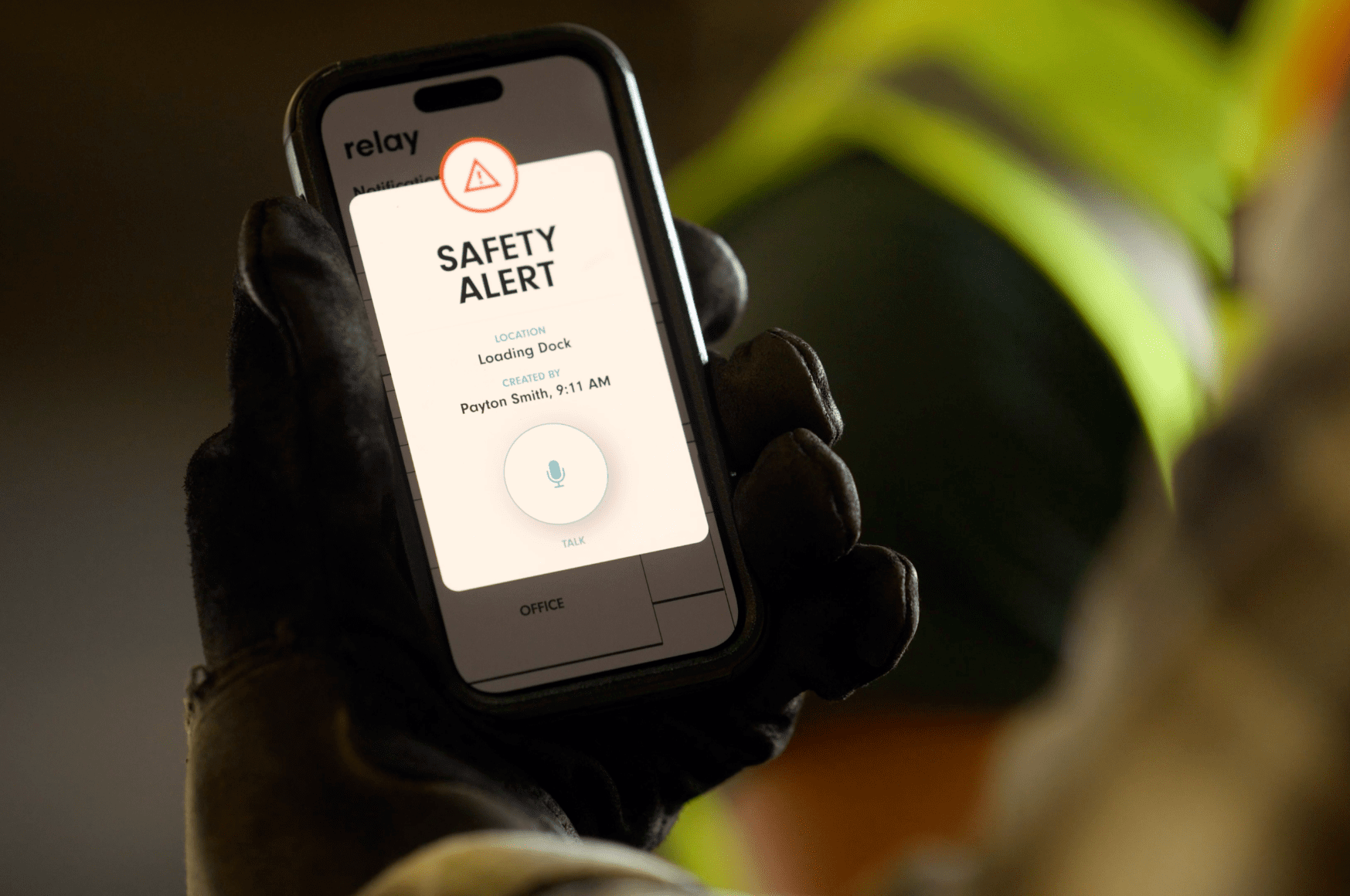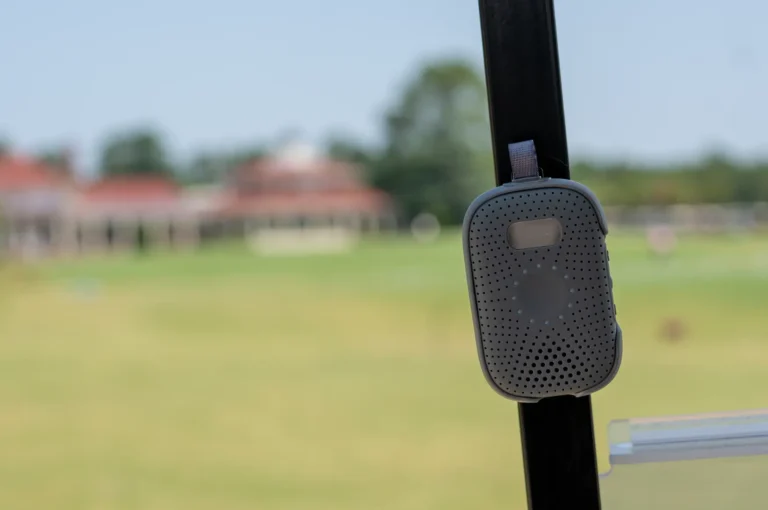Employee panic buttons play a critical role in keeping staff safe in the workplace. With the right duress alarm for your business, you can enjoy improved staff safety, better customer service, and increased efficiency when responding to emergencies.
In this buying guide, we’ll answer the common question, ‘how does a panic button work’, explain the key features of a duress alarm, uncover the benefits of duress alarms for workplaces, and share a buying guide of the best duress alarms for businesses.
What is a Duress Alarm?
A duress alarm, also known as a panic button or distress alarm, is a safety device an employee can use to call for assistance in an emergency. It’s primarily used in workplaces, like healthcare or hospitality, and can be combined with a two-way communication device, like a smart radio or walkie-talkie.
How Does a Panic Button Work?
A panic button, usually triggered by pressing a button once or multiple times, works by notifying primary responders that help is needed during an emergency. Once the alarm is triggered by an employee, the responder receives their location.
With two-way communication solutions, the responder can talk to the employee to ensure the right assistance is delivered quickly and (if needed) discreetly.
Read more about how panic buttons such as Relay’s work below.
Triggering a panic alert
To trigger the duress alarm on a Relay, press the push-to-talk button (located in the center of the device) quickly and at least five times. This is discreet, quick to perform, and an easy emergency procedure for staff to remember. Even better, it’s built into a device staff already use and carry around daily. Other panic buttons’ triggers may be set up differently.
Responders are notified
A duress alarm is preconfigured to notify certain people during an emergency. This is customizable. When an employee presses a panic button, responders should receive an instant notification with the employee’s name and exact location.
Push to talk
Relay’s duress alarms are built into our smart two-way communication devices, enabling responders to talk to the employee to better understand the problem. This way they can know what supplies may be needed and acknowledge when help is on the way. With cellular or Wi-Fi connectivity, communication between devices is clear, crisp, and reliable – no matter where you are.
Benefits of Duress Alarms For Businesses
An employee panic button can benefit businesses and staff by making the workplace safer and more efficient for customers and employees. The top benefits of an employee panic button include:
Improved safety
Duress alarms can make a workplace safer by enabling quick assistance to employees in an emergency and de-escalating potentially dangerous situations. It’s particularly beneficial for improving the safety of lone workers such as housekeepers.
Panic buttons are frequently built into two-way communication devices carried by employees, making it easy for staff to activate the alarms and receive help.
For example, staff working in a warehouse, hotel, or healthcare facility already using a radio device to communicate daily may benefit from having a panic button built in. Especially when it comes to feeling safe, confident, and protected while at work.

Rapid emergency response
Panic buttons can significantly improve a workplace’s response time to emergencies. Solutions should send instant alerts in less than one second to designated responders, so employees can access the help they need without delay.
Read how Fairfield and TownePlace Suites of Norfolk relies on Relay’s panic solution to handle staff and guest emergencies with intention and speed.
Better customer service
In client-facing environments (like healthcare or hospitality) duress alarms can also improve customer services by enabling quick support to reach a customer.
For example, if a guest is unwell or requires fast support from another professional, a panic button can ensure they get the help they need quickly.
Discreet activation
When an employee faces a situation where they need help, such as when alone in a room with a patient or guest, they can activate a duress alarm discreetly to receive assistance.
This prevents the need for staff to call for help or sound an alarm, which can cause a disturbance or distress among guests and other employees.
When to Use a Duress Alarm
Duress alarms can be used in a workplace any time an employee needs to report an emergency or receive fast assistance. This can include alerting staff to fires, falls, or any situation where an employee feels unsafe and needs assistance.
Common situations that can cause an employee to use a duress alarm include:
- Medical emergencies – If a customer or member of staff falls ill
- Feeling unsafe – If an employee feels unsafe due to a workplace problem
- Immediate assistance – If an employee needs instant assistance, such as during a machine malfunction or accident
- Workplace accidents – If an accident occurs in a workplace, such as an employee falling over or injuring themselves
- Reporting emergencies – In the event of a fire, flood, or other emergency to enable fast action and evacuation
- De-escalation of threatening situations – If a customer displays threatening behavior, an employee can discreetly notify responders to help de-escalate a situation
- Robbery or break-in – During a robbery or break-in, staff can use the panic button to notify management or the authorities discreetly
Buying Guide: How to Choose the Best Panic Button For Businesses
When choosing a duress alarm for your business, it’s important to consider the practicality of the device and how it can best benefit your employees.
With Relay, a duress alarm is built into our two-way radios, allowing employers to enjoy the full benefits of a smart radio along with improved workplace safety.
This type of duress alarm is particularly beneficial for staff working in large businesses where effective communication technology is key to operations, including:
- Casinos
- Hotels
- Golf courses
- Entertainment venues
- Food services
- Education
- Warehouses
- Healthcare
With Relay’s duress alarm, employers receive:
- Instant alerts – Panic alerts are sent to responders in less than one second, minimizing delays and offering improved safety
- Accurate location – Relay provides responders with an accurate location indoors and outdoors, with the ability to pinpoint the exact room
- Reliable connectivity – Triple redundancy and long-lasting Bluetooth beacons ensure continuous connectivity with minimal maintenance
- Real-time communication – With push-to-talk built in, responders can quickly talk to the employee to ensure the right help reaches them
- Live language translation – In a critical situation, our live language translation removes language barriers and ensures clear communication between parties
Other key features of Relay’s smart radios include:
- Nationwide range – Teams can communicate from other buildings and locations nationwide
- Better connectivity – Relay offers redundant connectivity with Wi-Fi and multiple 4G service providers
- Location tracking – Managers can track employee locations with GPS and Bluetooth to improve safety and workplace productivity
FAQs
Are Duress Alarms Silent?
Generally, duress alarms are silent for the person pressing the alarm, but sounded for the responder receiving the alert. This is intentional as duress alarms are designed to be discreet and not cause unnecessary panic in a workplace.
For example, in a hospitality venue, an employee can discreetly activate the panic button to notify the responder that they need assistance, without causing concern among guests or other staff.
What are the Types of Duress Alarm Buttons?
There are three main types of duress alarms, including wearable radio devices, pendants, and fixed buttons. Here’s a quick explanation of each type of employee panic button for the workplace:
- Wearable radio devices – A wearable radio device (like Relay) is a modern solution for warehouse, hospitality, casino, or healthcare employees. It works as a two-way radio and a panic button for emergencies.
- Emergency pendants – These pendants are typically worn around an employee’s neck and are specifically designed to send a distress signal. They are ideal for lone workers, like social workers.
- Wall-mounted buttons – These are fixed buttons mostly used to activate a discreet alarm during a dangerous situation. They are ideal for under the desks of banks or beneath supermarket registers.
What is an Example of a Duress Alarm?
An example of a duress alarm is Relay’s smart radio – a two-in-one device that enables employees to communicate effectively with team members and send a distress signal in an emergency.
How Relay Can Improve Your Workplace Safety
Relay can improve productivity and enhance worker safety, particularly for lone workers or staff working in customer-facing environments.
Clear communication is a necessary part of every workplace, especially when you’re using radios to send vital messages to your team.
Replacing your walkie talkies with Relay can help you maximize efficiency and improve the safety of your staff and customers. With nationwide range, Relay operates effectively in large premises and even different buildings.Ready to uncover if Relay is right for your business? Book a one-on-one demo today – or check out our customer stories to see how Relay has helped deliver over 2.5 billion messages across the world.







